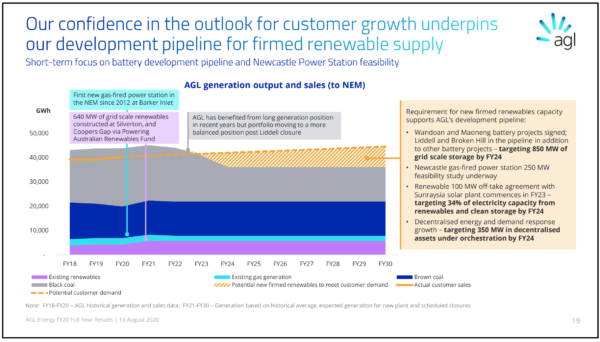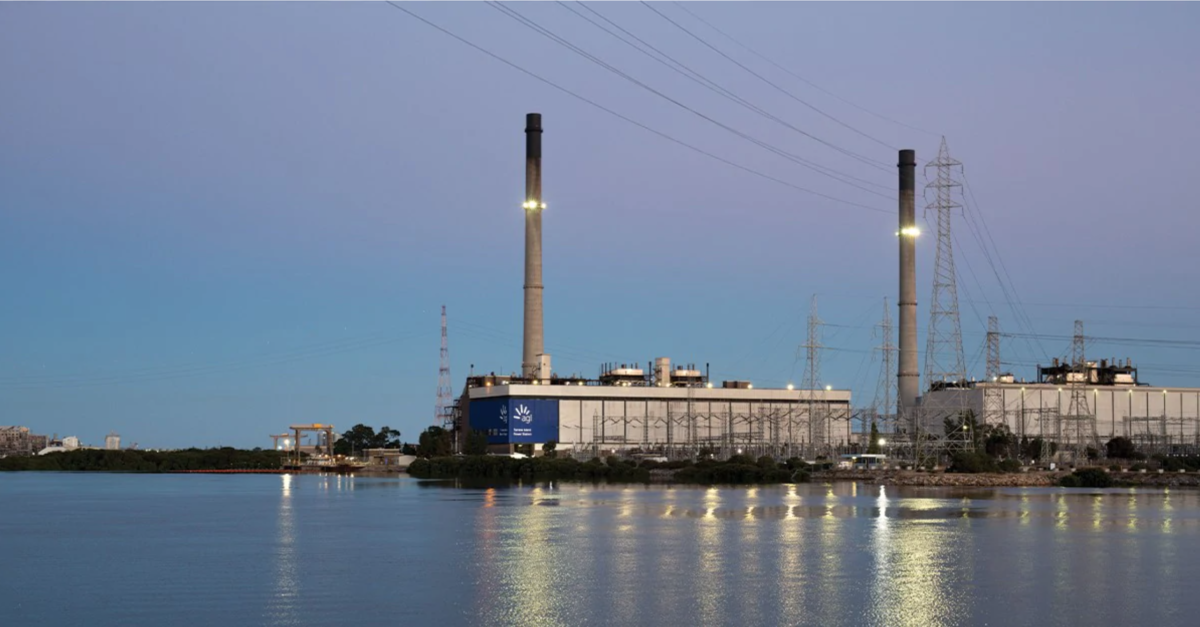On Saturday, AGL went a mega-step further towards achieving its goal of 850 MW of new large-scale battery storage integrated into its generation portfolio by FY 2024, with the announcement of a 250 MW, four-hour-duration battery system to be built in stages on the site of its Torrens Island Power Station in South Australia.
Acknowledging the stability that such storage capacity — 100 MW larger than the groundbreaking Hornsdale Power Reserve — could add to the South Australian grid, the state government has announced it is “fast tracking this huge battery by granting a planning exemption to AGL”.
The third and fourth turbines of AGL’s Torrens Island gas-fired plant are scheduled to be shut down in 2021 and 2022 respectively, in favour of AGL’s more advanced technology at neighbouring Barker Inlet Power Station, and South Australian Energy Minister, Dan van Holst Pellekaan said the strategic location of the new battery would help the state meet its aspiration of net-100% renewable energy by 2030.
Despite a fall in after-tax profit in the year to June 2020 of 22% — due to lower wholesale energy prices associated with increases in rooftop solar, the costs of COVID-19 and a major unplanned outage of AGL’s Loy Yang coal-fired power station in Victoria — the company’s CEO Brett Redman said AGL is “getting on with the business of energy transition” with its investment in the Torrens Island battery installation.
He said, the planned new South Australian battery energy storage system (BESS) will allow “a rapid response to changes in renewable generation when our customers and communities need it”, but the company has not yet committed to a completion date for the system.
AGL’s ongoing battery rollout builds on its development support of Queensland-based Wandoan (100 MW), New South Wales’s Maoneng (4 x 50 MW) and SA’s Dalrymple (30 MW) battery storage systems.
Raking over hot coals
Although energy prices are decreasing, AGL Chief Operating Officer, Markus Brokhof, said in the company’s EOFY presentation to shareholders in August that, “AGL’s strategy is to optimise dispatchable generation, support investment in firmed renewables and continue to invest in the accelerating emergence of batteries and other energy storage technologies.”

The gentailer also has plans to build a battery of greater capacity — 500 MW — adjacent to its Liddell coal-fired power plant in New South Wales, which is scheduled to be retired from operation in 2023.
The Liddell battery will supply essential stabilising services to the grid as that state ramps up its plans to replace its reliance on coal-fired generators with renewable energy zones (REZs) that integrate solar and wind generation with storage, transmission improvements and co-located energy-hungry industries.
As Van Holst Pellekaan put it on Saturday: grid-scale batteries are “most helpful for pumping massive amounts of electricity within milliseconds into the grid, or the opposite — sucking it out — and that helps control the flow of electricity in the grid”.
Virtual power play
AGL has been a leader in its use of new technologies, such as those used to connect and operate virtual power plants (VPPs), to manage the flow of electricity from an ever-growing fleet of rooftop PV systems.
In June last year it announced plans to offer its customers in South Australia, Victoria, New South Wales and Queensland the opportunity to sign up to its residential battery program and register for participation in a BYO-battery VPP, that would allow AGL to orchestrate the many distributed generation and storage systems for the benefit of customers and the grid.
Said Brokhof in AGL’s FY 2020 Results presentation, “We believe battery technology is now at a level that allows AGL to lead in Australia’s transition to a smarter and more efficient energy future.”
His statement aligned with a report published at the same time by the Clean Energy Council that found investment in large-scale batteries had doubled off the back of falling costs of the technology in the 12 months to the end of Q1 2020.
CEC Chief Executive, Kane Thornton, underscored the value of batteries for smoothing the variability of wind and solar generation and providing critical system services such as fast frequency response: “There is no other technology that can respond as quickly as batteries to changing frequency on the energy system,” he said.
A convergence of digital and energy services
Friday last week also saw AGL’s diversification into the telecommunications space with the launch of a number of broadband products.
The company’s future strategy is built around simplifying the management of essential services for its customers. To this end, in December 2019, it acquired the Southern Phone Company, a regional telecommunications provider serving some 100,000 customers.
AGL’s three new unlimited data plans are offered at a 15% discount when bundled with AGL energy plans — an additional incentive to sign up for the one-stop shop.
The apparent diversification at AGL in fact recognises the increasingly digital nature of residential and commercial energy services, and the importance of managing data and therefore energy generated by distributed rooftop PV and small-scale battery resources.
“Recognising the growing convergence of energy and data, it’s becoming more important to meet the needs of our connected customers by providing the essential services of the future,” said AGL Chief Customer Officer Christine Corbett on Friday.
“Our digital capability enables us to move beyond an energy only offering to a multi-product proposition, enabling connectivity of essential services with digital and smart technology.”
This content is protected by copyright and may not be reused. If you want to cooperate with us and would like to reuse some of our content, please contact: editors@pv-magazine.com.









3 comments
By submitting this form you agree to pv magazine using your data for the purposes of publishing your comment.
Your personal data will only be disclosed or otherwise transmitted to third parties for the purposes of spam filtering or if this is necessary for technical maintenance of the website. Any other transfer to third parties will not take place unless this is justified on the basis of applicable data protection regulations or if pv magazine is legally obliged to do so.
You may revoke this consent at any time with effect for the future, in which case your personal data will be deleted immediately. Otherwise, your data will be deleted if pv magazine has processed your request or the purpose of data storage is fulfilled.
Further information on data privacy can be found in our Data Protection Policy.